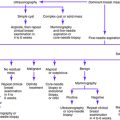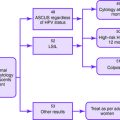Chapter 26 PELVIC PAIN: ACUTE
Acute pelvic pain is pain felt in the pelvic area for less than 48 hours. It can be difficult to make the diagnosis on the basis of history and physical examination alone, because acute pelvic pain can have gynecologic, obstetric, urologic, musculoskeletal, or gastrointestinal causes. When a patient with acute pelvic pain initially presents for evaluation, it is important to quickly determine whether the patient is pregnant and whether the patient has a surgical emergency.
Key Historical Features
Key Physical Findings
✓ Vital signs, especially for signs of dehydration, sepsis, infection, or severe blood loss
✓ Gastrointestinal examination
✓ Skin examination to evaluate for any skin lesions that may indicate shingles
Suggested Work-Up
| Urine pregnancy test | To evaluate for pregnancy |
| Cervical culture/swab for Neisseria gonorrhoeae and Chlamydia trachomatis | To evaluate for gonorrhea and chlamydia infection |
| Complete blood cell count | To evaluate for infection or anemia |
| Chemistry panel | To evaluate for dehydration or acidosis |
| Urinalysis | To evaluate for urinary tract infection, urinary tract stones, or diabetic ketoacidosis |
Additional Work-Up
| Urine culture | If a urinary tract infection is suspected |
| Pelvic ultrasonography | If the patient is pregnant or gynecologic disease is suspected |
| Quantitative β–human chorionic gonadotropin measurement | If the urine pregnancy test yields positive results and an intrauterine pregnancy is not seen on ultrasonography |
| Blood culture | If sepsis is suspected |
| Computed tomographic (CT) scan of abdomen and pelvis | If the examination findings suggest appendicitis, diverticulitis, urinary tract stone, or abscess (pregnancy test should be performed before CT scanning is done) |
| Abdominal radiography | If bowel obstruction or urinary tract stone is suspected (pregnancy test should be performed first) |
| Blood typing and screening | If the patient is pregnant to evaluate whether patient is Rh negative |
Baines PA, Allen GM. Pelvic pain and menstrual related illness. Emerg Med Clin North Am. 2001;19:763-780.
Hewitt GD, Brown RT. Acute and chronic pelvic pain in female adolescents. Med Clin North Am. 2000;84:1009-1025.
Samraj GPN, Curry RWJr. Acute pelvic pain: evaluation and management. Compr Ther. 2004;30:173-184.




